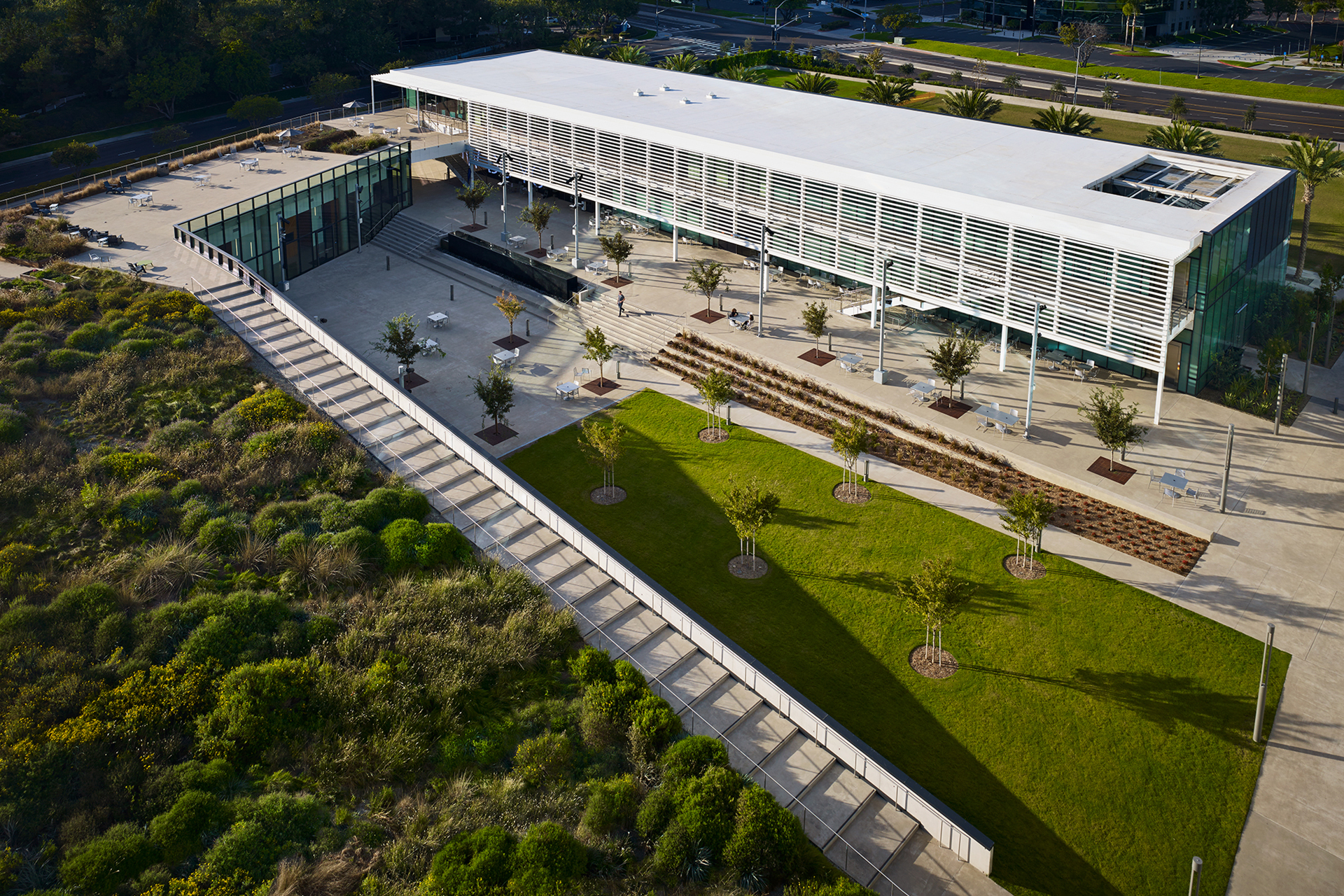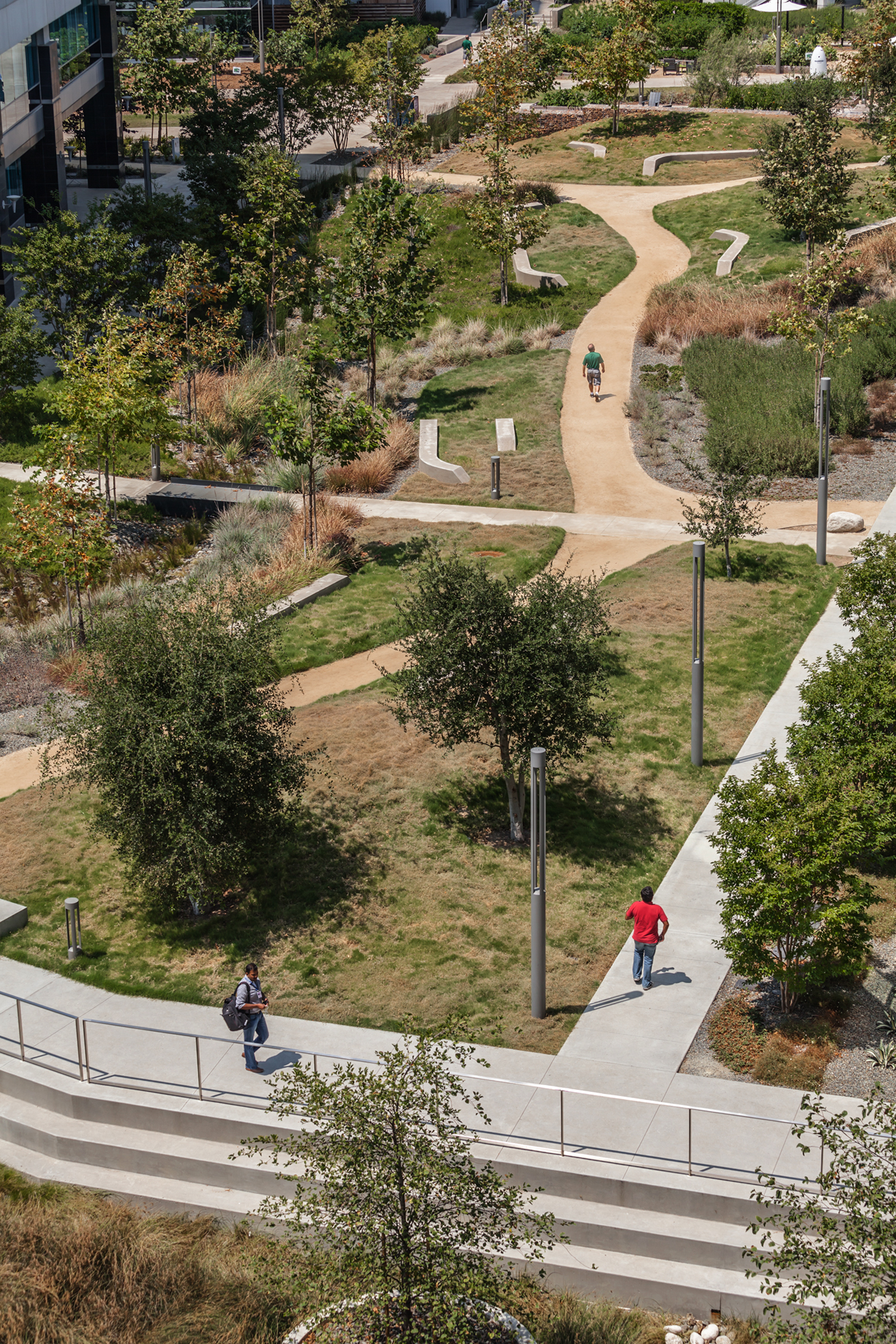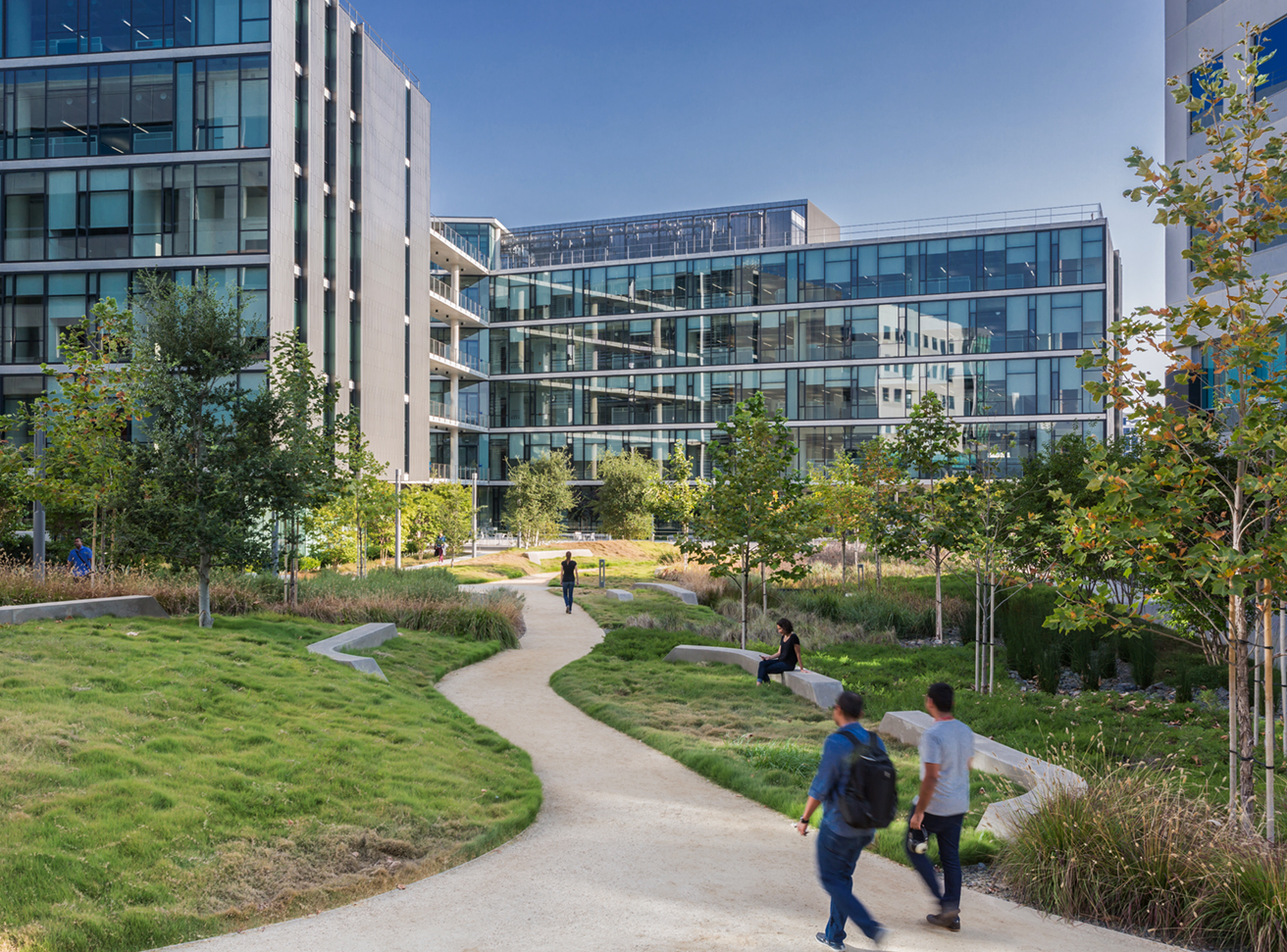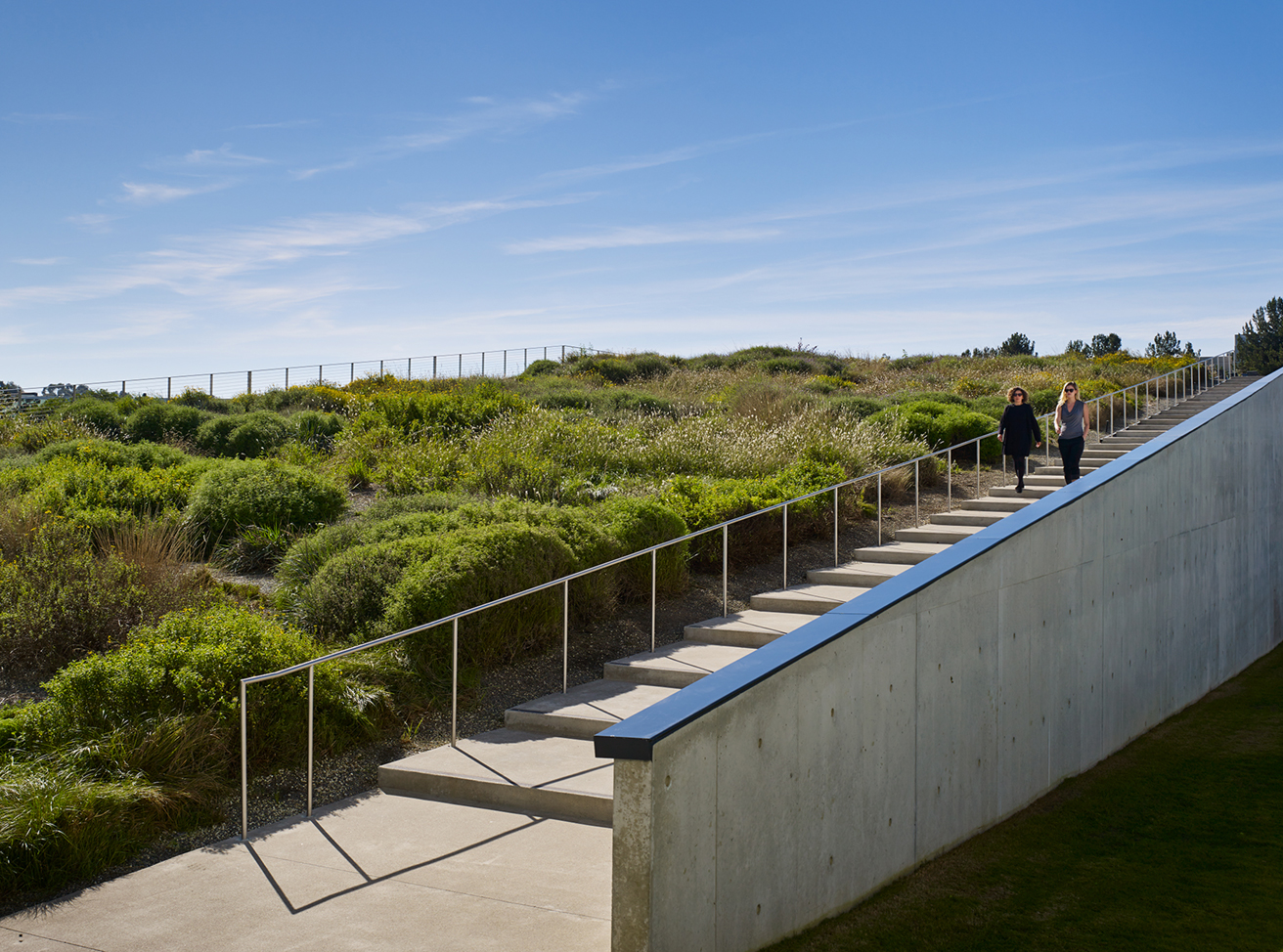
Serious Fun: How Tech Companies Are Using Landscape Architecture to Attract Talent | Q&A with Aaron Ross
Catching up with Aaron Ross after his presentation at the ASLA Annual Meeting and Expo, the following Q&A explores the session "Serious Fun: How Tech Companies Are Using Landscape Architects to Attract Talent." Ross represented BNIM and was joined by Renee Bihan, FASLA, SWA Group and Steven Spears, FASLA, Design Workshop, Inc. The session covered BNIM's Pacific Center Campus project, examining how design can appeal to human nature to attract and retain the best tech talent through integrated work environments.
—
Aaron, your recent session at the ASLA Annual Meeting explored how landscapes are increasingly used as a means for companies to attract talent. How have you seen this evolve over the last decade?
Multiple factors have shaped landscape design over the last decade, but I think there are three main ideas impacting the discipline’s evolution, especially in workplaces. The first is that companies are looking for ways to differentiate themselves and remain competitive; it’s about a total amenities package that encompasses company culture and physical work environments. More investment is made in open space and common areas that hasn’t traditionally been associated with offices. The second idea is closely tied to the first, and that is the notion of “office compression” where more program is being added and the boundaries between architecture and landscape are becoming blurred. Finally, there’s a richer understanding and appreciation of reuse and adaptation. In existing office campuses, landscape architecture can be a cost-effective way to give a project a facelift. It can be transformative and contextual without breaking the bank.

How do you see companies valuing landscape design in the future? Do you see any trends reflected from your session?
There are a couple trends that were reflected in our session, and I would say that companies will increasingly value landscape design. Generationally, there’s a desire for more lifestyle choices, especially for millennials, and companies are taking note of that. There’s also a sentiment towards “content” or the idea that you take what you find and work with it, that you don’t have to start from scratch. There’s a realization that the bigger context is important. These ideas are tied to office compression and adaptive reuse.
Can you give us a brief introduction into the Pacific Center Campus and some of the problems and opportunities the project presented?
The Pacific Center Campus Development included master planning and the design of multiple buildings. The program included office space, a dry laboratory, health center, and gathering areas for learning or conferencing. The existing campus faced issues of connectivity and identity, where buildings were insular and surface parking was prevalent. BNIM’s design integrated the overall campus around public spaces, public amenities, and clear circulation systems. The design made new connections to Lopez Canyon by weaving the existing trail network into the campus to promote health and well-being.

The landscape team was integrated with multiple disciplines on the project — what do you see are the advantages to an interdisciplinary design approach?
I think project teams will only continue to become more interdisciplinary; it’s a model where everyone is working with the same assumptions towards the same vision. Every discipline is united in interpreting and expanding on project goals with their own unique expertise. From a design exploration standpoint, you see opportunities and erase the blind spots that individual disciplines may have to create truly seamless environments.
Landscape designers are increasingly interested in ideas of public space, health and well-being. What aspects of the campus landscape reflected these ideas?
Our first question with any project is when we put down our footprint on a site, what did we change? We’re always interested in what used to be there and if any of those things are worth bringing back. The Lopez Canyon story rose to the top because the original campus was disconnected and didn’t allow space for people or nature. We wanted to bring the canyon trails into the development and promote health through a wellness center. The site now features gardens and urban plantations, spaces where you can watch people harvesting from your office or eat food from the dining center that’s grown on site. In this way, we begin to build powerful connections between people, food and natural systems.

This is a project that embodies BNIM’s values. How has your work on the Pacific Center Campus informed other firm projects?
One of the biggest things we learned through this project was how to better integrate landscape, architecture and interiors to form seamless environments. BNIM worked across all three disciplines, and at the Pacific Center Campus it’s hard to know where the buildings stop and the site begins. The landscape became tied to its context. We were also able to enhance our understanding of water systems and plant palettes, especially for that climate.

How does BNIM leverage research in a project like the Pacific Center Campus?
Research has always been important to BNIM, whether to design spaces or check our assumptions after a project is complete. We’ve worked with Stanford University, the Salk Institute, and others to help frame what we looked at with the Pacific Center Campus. We wanted to leverage expertise. The project is a chance to develop new ideas and record what we learn, and we’ve realized that learning how to design better is also its own type of research.
How do you see BNIM transforming the landscape architecture industry in the years ahead?
BNIM will continue to reinvent typologies, rethink reuse, and integrate across disciplines. At our core, we believe that we can enhance the human condition and inspire change. We are constantly learning from one another through an incredible breadth of knowledge that doesn’t sacrifice depth. We advocate systemic design strategies, and I think reinvention is a powerful component to how we work. As a design practice, we’re always aiming to create work that’s as beautiful as it is performative and human.
Also posted to Medium | Aaron Ross is a former BNIMer

